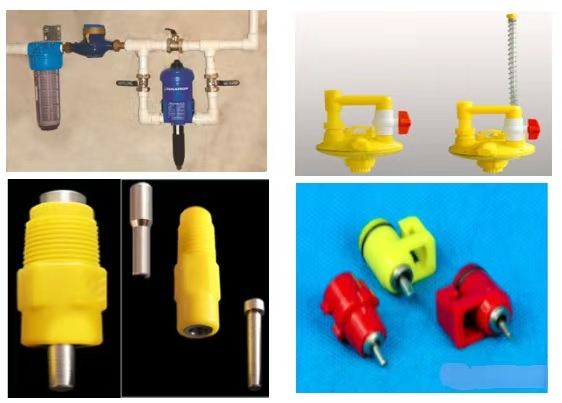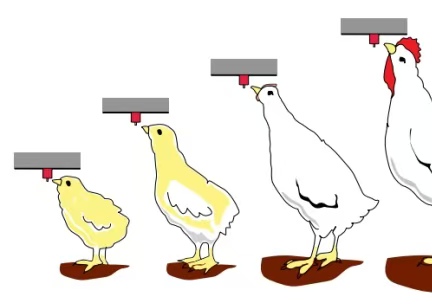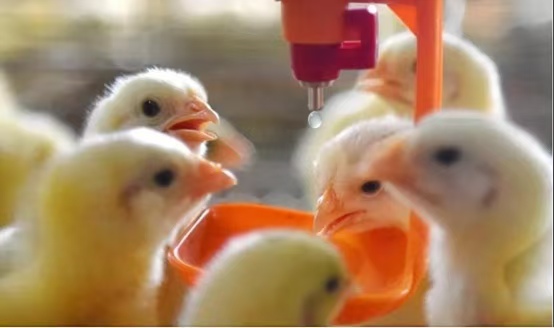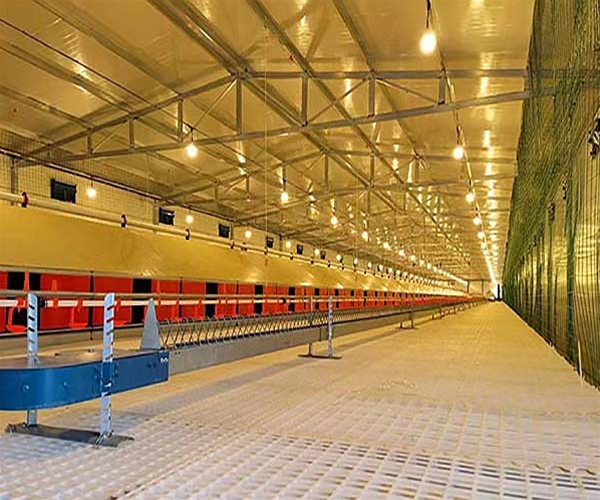Water is the source of life, making up about 70% of a chicken’s body weight. From the first day chicks arrive at the brooding house, providing fresh and easily accessible drinking water is critical. Proper water management ensures feed intake and supports rapid growth, making it a cornerstone of poultry farm success.
1. Importance of Water
Water is involved in nearly all metabolic processes in a chicken’s body. Generally, a chicken’s water consumption is about twice its feed intake. During summer, water consumption may exceed 2.5 times the feed intake to aid in heat dissipation.
Key Observations
- A drop in water intake is often the first sign of flock health issues.
- Reduced water consumption leads to decreased feed intake and egg production.
- Studies show that withholding water from laying hens for 24 hours can cause egg production to drop by 30%, requiring 25–30 days to recover.
If flock growth, feed conversion rates, or egg production decline despite corrective actions, water quality or availability is likely the issue. Chronic problems in specific house sections or recurring issues across flocks often point to water system inadequacies.
2. Components of a Drinking Water System

A comprehensive drinking water system includes:
- Medication Dosers
- Pressure Regulators
- Round or Square Pipes
- Water Nipples
For laying hen farms, 360° nipple drinkers are common, available in threaded or clip-on designs. Brooding houses benefit from nipple drinkers with catch cups, which reduce water spillage and allow visual pressure assessment.
Tips for First-Time Drinking:
When chicks arrive, ensure every nipple drinker has a drop of water hanging to attract them. This simple step is critical for successful brooding.
3. Factors Influencing Drinking Water Management

(1) Proper Water Line Height
- Ensure water lines hang straight to prevent biofilm formation from nutrient buildup.
- Adjust the height as chickens grow so they slightly stretch their necks without jumping or lowering their heads to drink.
Guidelines:
- Initially, nipples should align with the chicks’ eye level.
- Gradually adjust the height so the head forms a 45° angle with the nipple.
(2) Optimal Water Pressure
Water pressure must match the flock’s age, season, and house length.
- Brooding Stage: Use low pressure (2.5–5 cm water column).
- Laying Hens: Set water column height to 20–30 cm at the line’s end.
Caution:
- High pressure causes water wastage and environmental dampness.
- Low pressure limits water access, reducing intake by over 20% and impairing growth.
(3) Mineral Content
Excessive minerals like iron, manganese, calcium, and magnesium impact water quality.
- Iron and Manganese: Bitter taste reduces water intake and promotes bacterial growth. Use 40–50 micron filters and chlorination to address this.
- Calcium and Magnesium: High levels lead to water hardness, causing scale buildup and reducing system efficiency.
Solutions:
- Use water softeners, but monitor sodium content to avoid reproductive issues.
- Maintain water hardness between 60–150 mg/L (as CaCO3).
(4) pH Levels
Water pH affects both chicken health and disinfection effectiveness.
- High pH (>8.0): Causes bitter taste and reduces water intake.
- Ideal pH Range: Maintain a slightly acidic environment to inhibit bacterial growth and enhance chlorine efficiency.
(5) Biofilm Development
Biofilm is a slimy layer formed by bacteria, fungi, and algae, thriving in low-flow, nutrient-rich systems.
- Biofilm reduces waterline volume, clogs nipples, and diminishes flock health.
- It decreases vaccine and medication efficacy, leading to higher mortality rates and production losses.
Preventive Measures:
- Regularly add acidifiers to remove organic matter and biofilm from waterlines.
- Schedule routine waterline cleaning and maintenance.
4. Practical Tips for Effective Water Management
- Daily Monitoring:
Check water intake levels to identify potential issues early. - Filter Maintenance:
Clean filters weekly to ensure smooth water flow. - Seasonal Adjustments:
Adapt water pressure and flow according to seasonal requirements. - Record Keeping:
Maintain detailed logs of water system performance and flock health indicators.
5. Conclusion
Effective drinking water management is vital for poultry farm success. Ensuring optimal water quality, pressure, and availability enhances chicken health and productivity. By investing in a reliable water system and adhering to best practices, poultry farmers can maximize returns and ensure sustainable operations.


